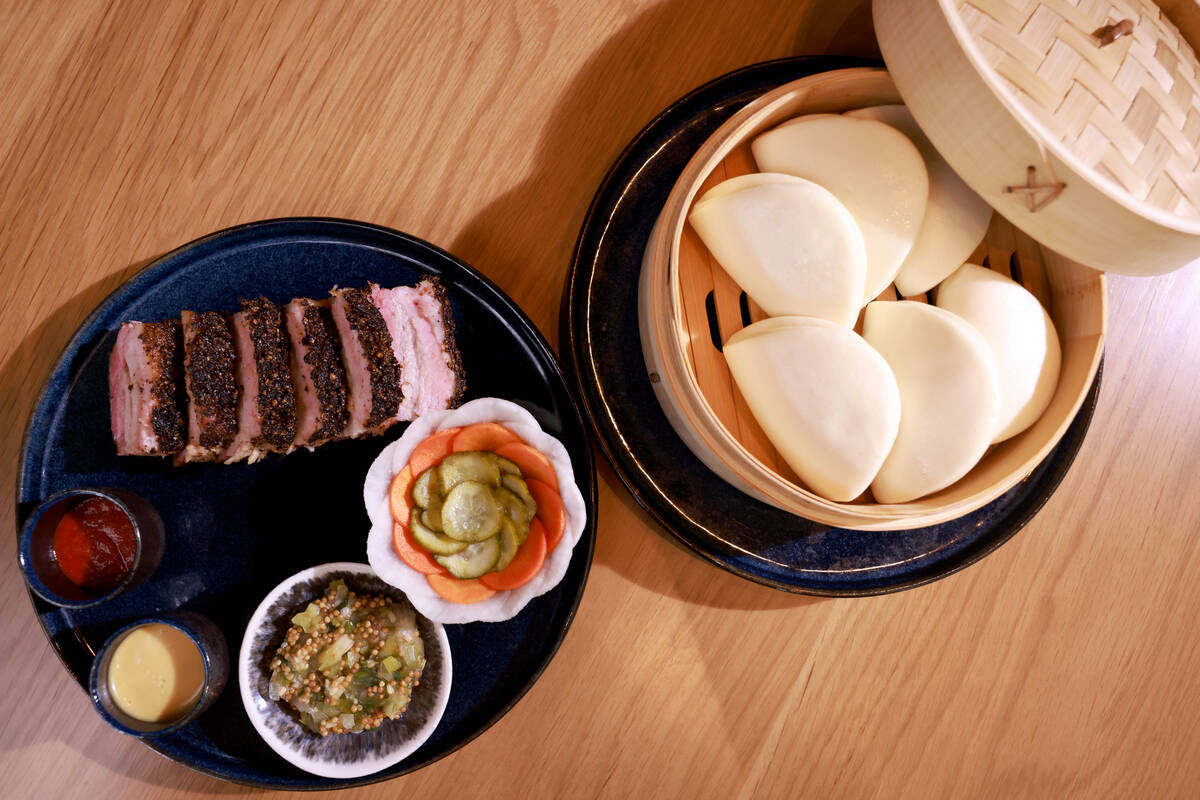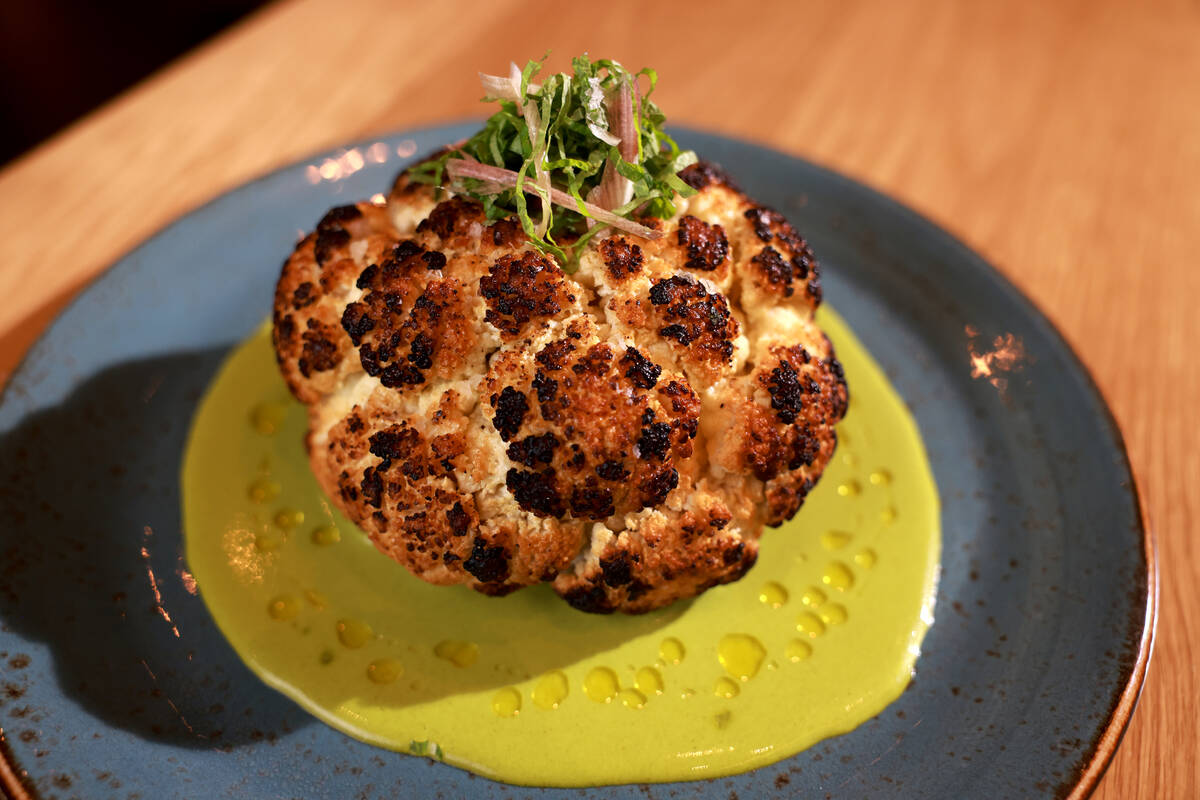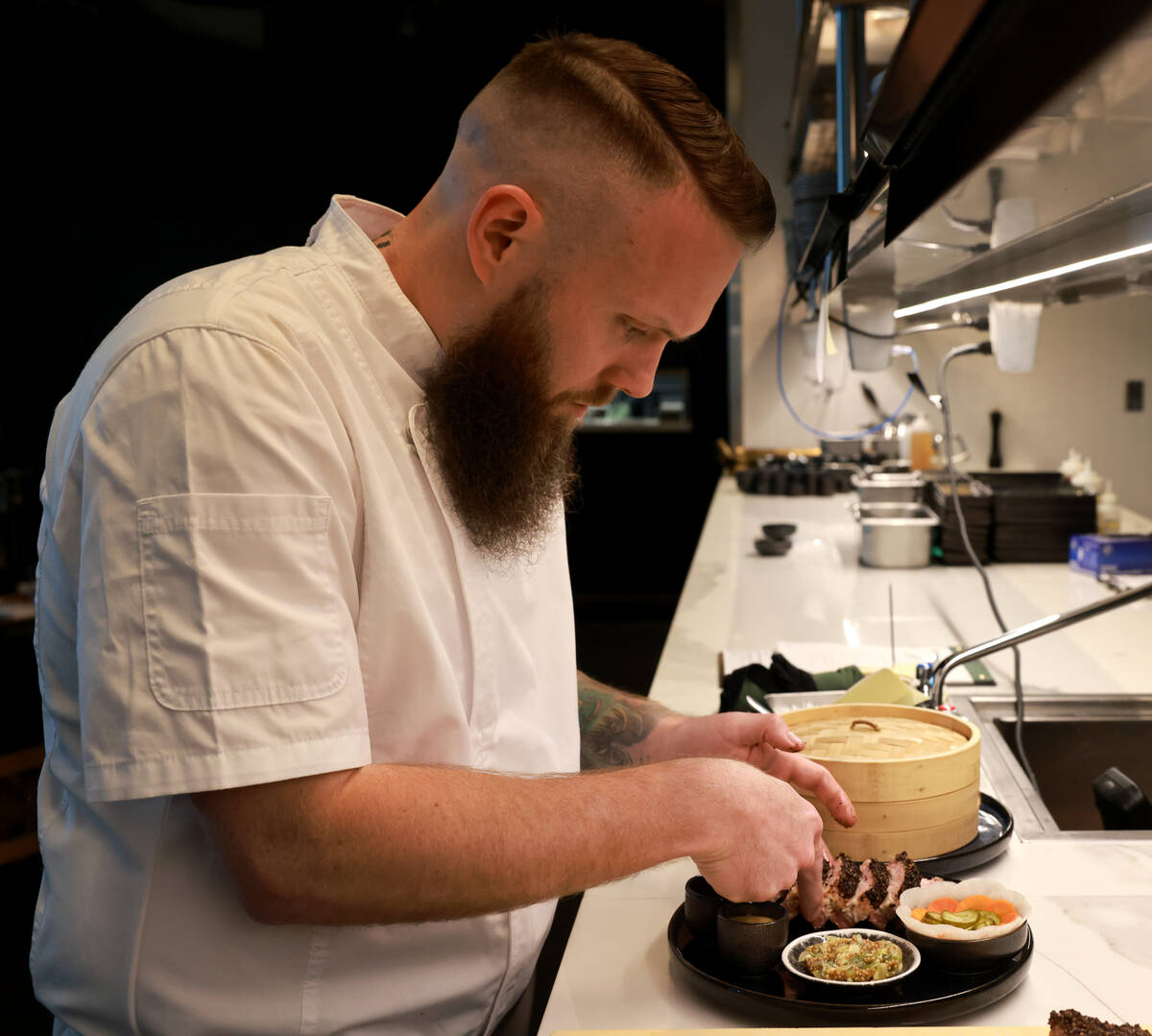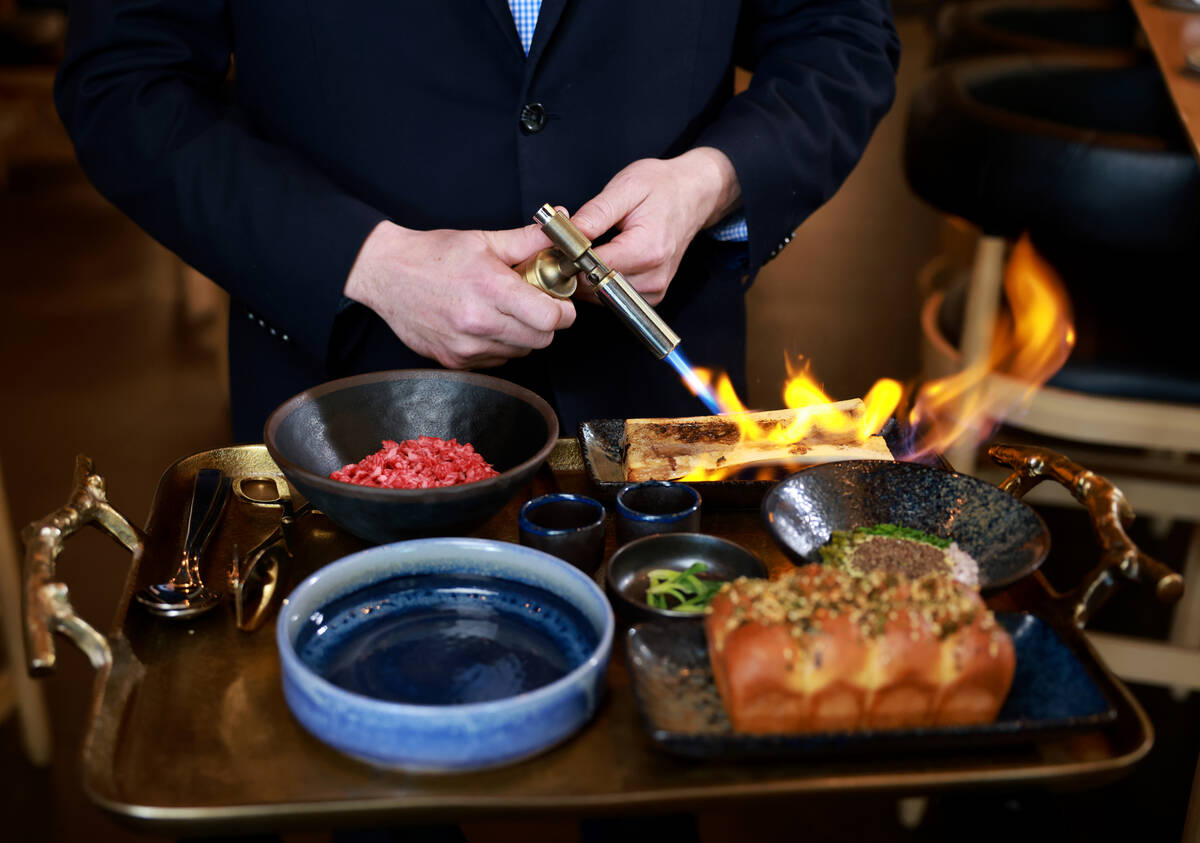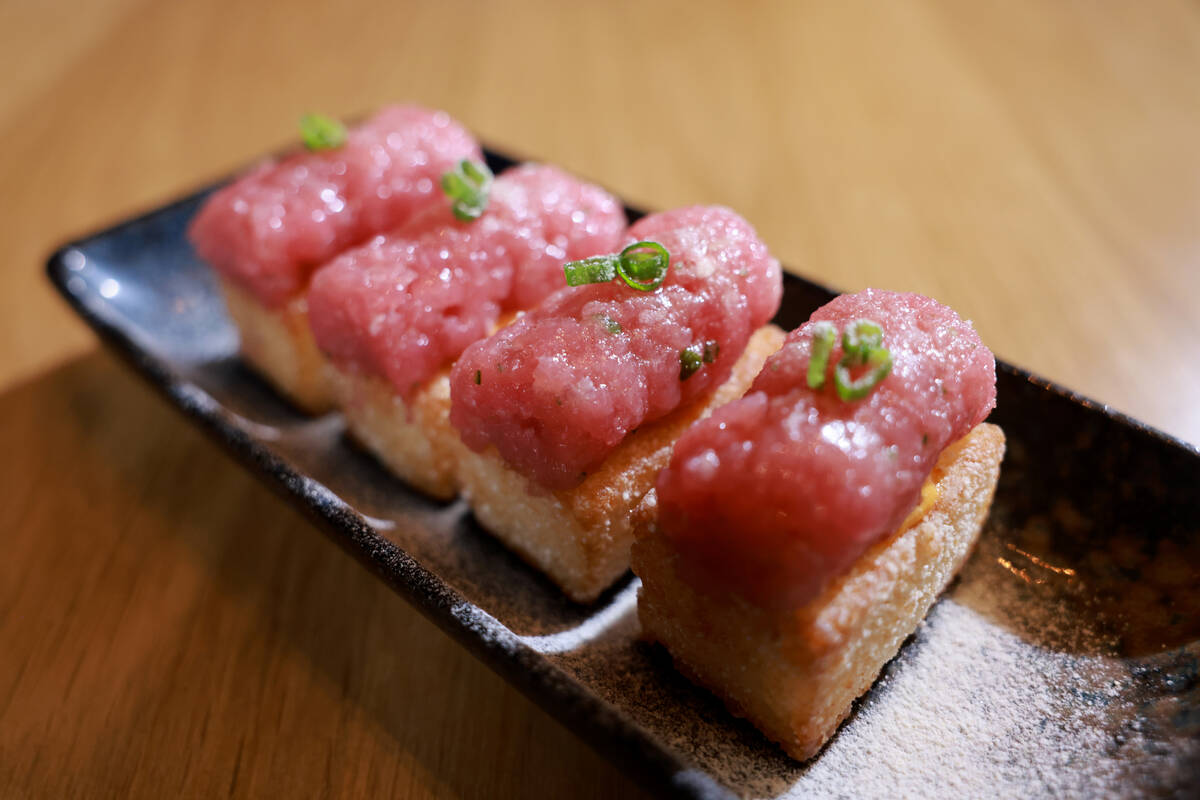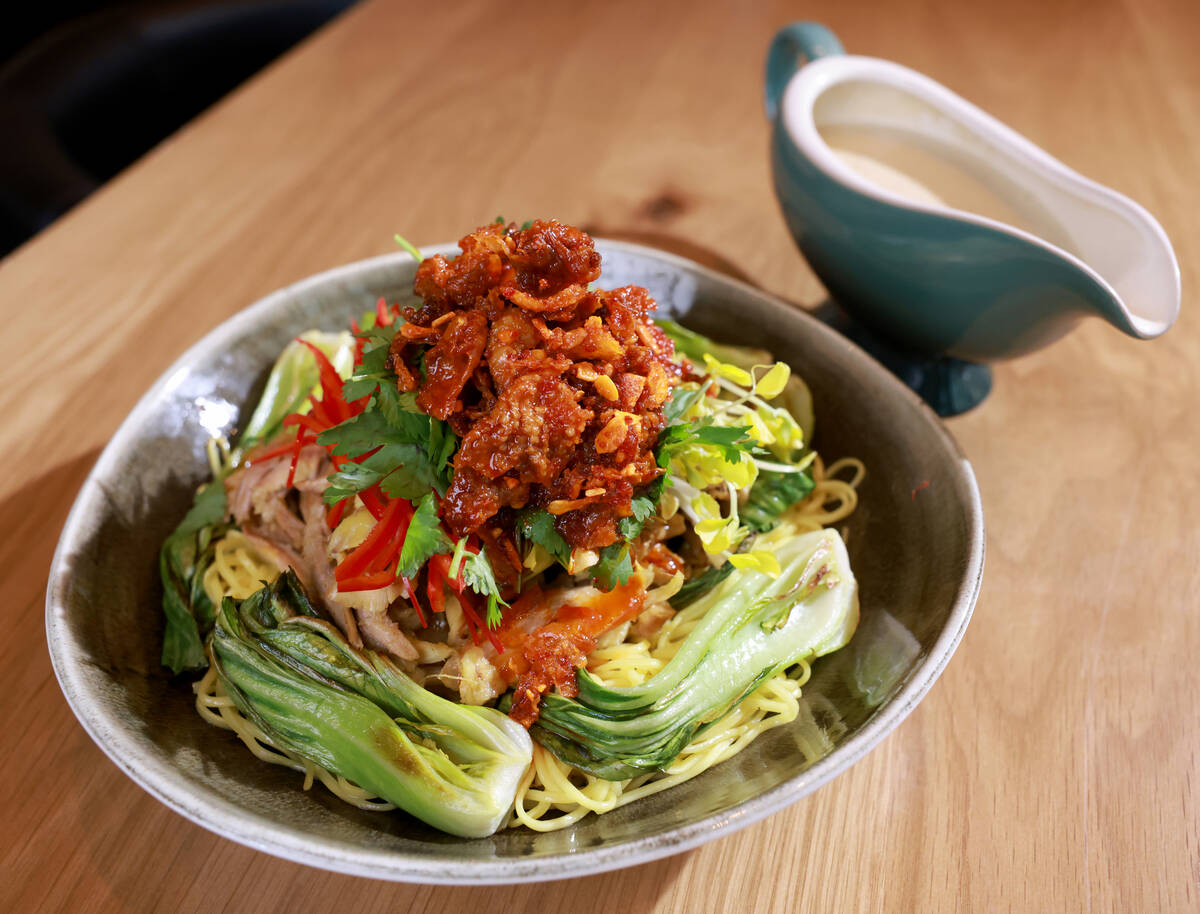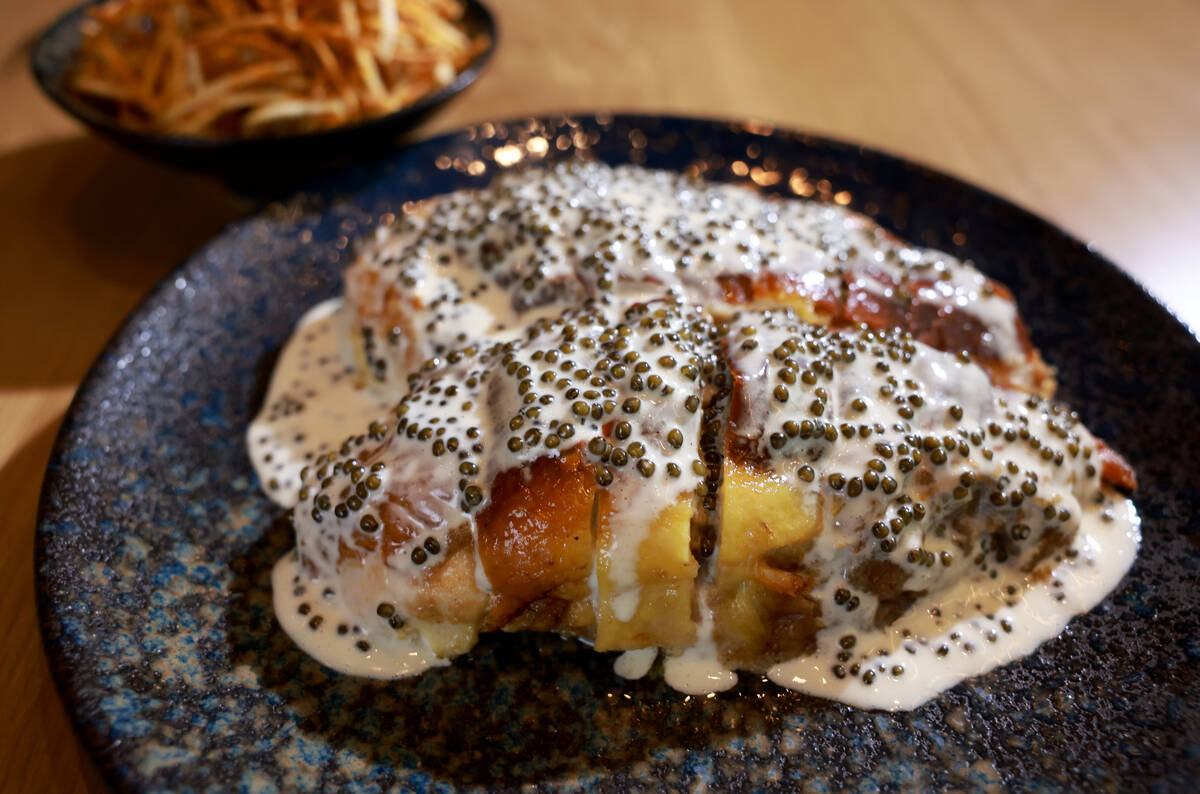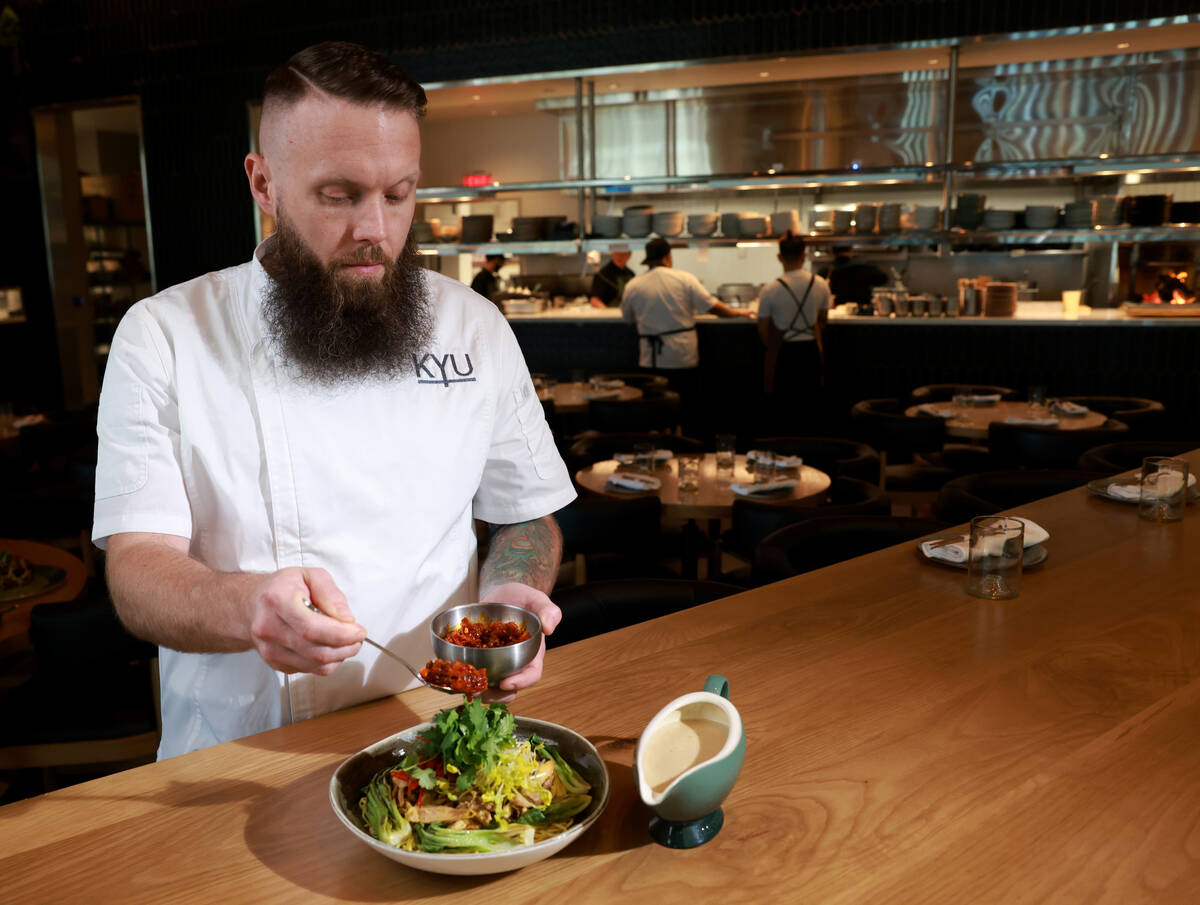Inside 1 of Las Vegas’ most compelling new restaurants
If you don’t have sparklers, will they still come?
Christopher Arellanes, the corporate executive chef of KYU, a group of Asian-inflected wood-fire barbecue restaurants, is asking the question the other afternoon at KYU Las Vegas, where soaring windows admit slants of sunlight while framing views of the Strip.
KYU — also of Manhattan, Miami, Mexico City — opened in December at the Fontainebleau (itself a sort of architectural sparkler fizzing blue on the northern Strip). Arellanes offers the question as a comment on the Vegas penchant for adding showy elements to drinks and dishes, hoping for social media saturation.
“We don’t have the $1,000 briefcase steak with beautiful girls,” the chef continued in the same vein. “I think sometimes, chef-driven concepts take a little more time.”
The chef is too modest. About four months in, KYU doesn’t need a little more time. It’s already one of the most compelling new restaurants in the city.
And while the menu has its rococo moments (more on that later), it’s anchored by the chef’s questing culinary intelligence and a focused approach honed at some of the country’s best restaurants, including Per Se and Eleven Madison Park.
“Our food is very technique-driven,” the chef said. “It’s all on the back end.”
Cool and warm
Arellanes is in his mid-30s. He sports a bushy beard — not biblically bushy, but full enough — that cannot hide his finely rendered features. He is amiable and quick to laugh; his eyes are steady and intense. Discipline undergirds the geniality, and you sense that, in the kitchen, he is not messing around.
Consider tuna crispy rice: cool sushi-grade tuna atop warm blocks of fried sushi rice. The dish has become something of a modern sushi standard, iterations famously served by restaurants such as Nobu, Morimoto and Katsuya.
The KYU version begins with rice that soaks for eight hours to remove the starch. The rice is cooked, seasoned, pressed into a sheet pan and rolled to an even surface before the pan is chilled overnight. Chilling makes it easier to slice the rice into blocks for frying. Bigeye tuna, humming with the heat of chilis, is riced for texture, then piped onto the blocks.
Tuna crispy rice is the No. 2-grossing dish in the KYU family. No. 1? The cauliflower.
Heads for charity
Now, cauliflower in its natural state is the menu equivalent of being on hold. Eyal Shani, the Israeli chef, popularized the technique of roasting a whole head to give the ingredient some oomph. At KYU, a fat head full of florets emerges from the wood fire. The cauliflower is carved tableside in a puddle of whipped goat cheese and shishito-herb vinaigrette.
The cauliflower is so popular, the KYU group donates 1 percent of sales to nonprofits. In Vegas, where the restaurant does about 300 covers a night, 10 percent of the orders are for cauliflower.
“It attacks all the senses: salt, fat, heat, umami,” Arellanes said. “It has developed a cult following since its inception in 2016. For those that are into it, cauliflower is a religion.”
Bao meet a twist on pastrami
KYU bills itself as a barbecue restaurant, although its top two sellers aren’t barbecue dishes.
“The identity can get a little convoluted,” the chef acknowledged. “It would stick without calling it American barbecue, but it’s still a big part of our identity.”
To wit: Short ribs are smoked for eight to 10 hours, duck breast and some vegetables are also smoked, the tomahawk steak is grilled but finished in the smoker. And then there is the pastrami, fashioned not from beef brisket but from pork belly.
The meat is brined for four days in pink salt; four hours of smoking low and slow follow to develop the proper pastrami crust. The pastrami is steamed to order, then sliced and plated with bao (à la Peking duck) and with a splendor of house condiments: miso mustard, Fresno chiles fermented in hot sauce, fermented scallions with pickled mustard seeds.
“You build your own bao,” the chef said — rich, hot, salty, sour, spongy. “They’re a big part of our program,” a nod, he added, to classic pastrami from New York City, where the chef built his career.
Spread the bread, with fat and wagyu
The KYU menu does bring the Vegas, too.
Wagyu tartare starts out tableside as a trench of bone marrow doused in rum and set aflame. Furikake aïoli is mixed with A5 wagyu, fresh and pickled jalapeños, and the brûléed bone marrow. While supplying drama, the marrow also performs an essential function, the chef said.
“It adds fat. If you don’t have that meaty fatness, it takes away from the wagyu itself. It mimics the wagyu for structure; otherwise, it’s just meat and mayonnaise.”
Japanese milk bread — light yet substantial, moist but never gluey, its dusting of togarashi accenting the gentle spiciness of the tartare — rides sidecar. There is a primal pleasure in eating a pull of the bread you trowel with tartare. (Is that a moan?)
Posh poultry in two parts
Royal Golden Chicken (serves up to four) could easily be written off as a grandstanding Vegas indulgence — caviar, foie gras, a $340 price tag — but the dish actually harnesses, abundantly, that back-end technique.
The golden-skinned bird, sourced from a micro-farm in Pennsylvania, supplies shredded dark meat from its hindquarters for a Malaysian-style laksa with cashew cream, charred bok choy and a snarl of noodles. The laksa is part one of the Royal Golden Chicken.
Part two features the breast stuffed with a forcemeat of truffles and foie gras. The chicken bones are smoked to make a cream sauce, with briny beads of Kaluga caviar, that drapes the breast. Royal Golden Chicken, for obvious reasons of complexity, cannot be offered on the same scale as, say, the cauliflower.
“We’re not selling an insane amount per night — two to three a night is good for us,” the chef said. “The scarcity increases the appeal.”
A way with plants
Arellanes has been sober for six years. Surely, that sobriety contributes to the cleanness and precision of his cooking. “You taste from your smell, and my palate really heightened after I was able to breathe and get sober,” he said.
On the Wagon, KYU’s mocktail menu, celebrates the chef’s sobriety, and the intention to make mocktails that taste like fully formed drinks, not just juice without kick.
Ahead, the chef said he was most excited about bringing smoke, fire and Asian influences to plant-based cooking, “really embodying the vegetable itself: smoking it, braising it, grilling it. Barbecue gets a bad rap for being heavy, but with this, you don’t feel heavy.”
Imagine what Arellanes could do with rutabaga.
Contact Johnathan L. Wright at jwright@reviewjournal.com. Follow @JLWTaste on Instagram.



